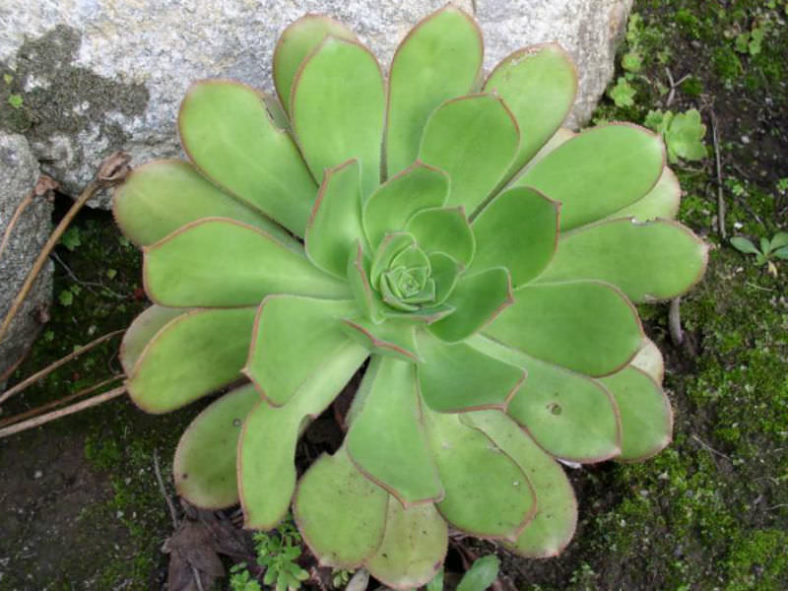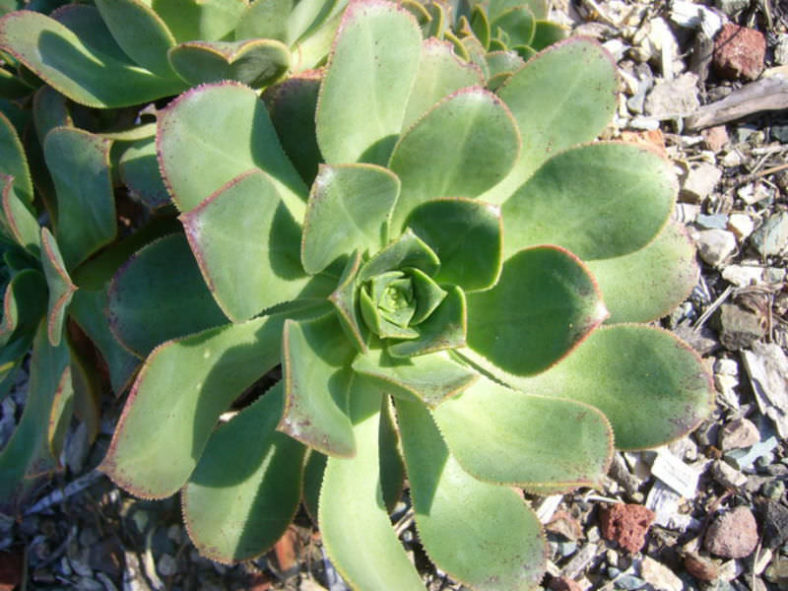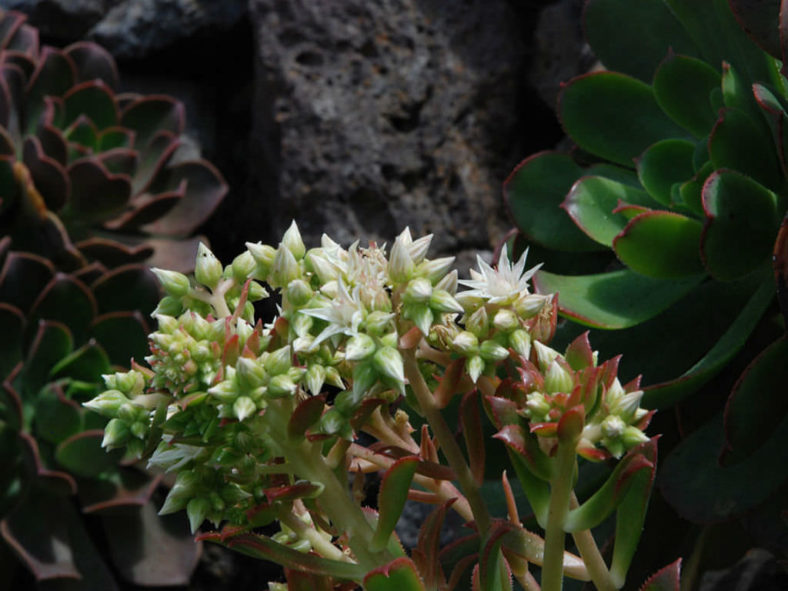Scientific Name
Aeonium davidbramwellii H.Y.Liu
Synonym(s)
Aeonium ciliatum subsp. praegeri
Scientific Classification
Family: Crassulaceae
Subfamily: Sempervivoideae
Tribe: Aeonieae
Genus: Aeonium
Etymology
The specific epithet "davidbramwellii" (pronounced "day-vid-bram-WEL-ee-eye") honors David Bramwell (1942-2022), an English botanist and taxonomist.
Origin
Aeonium davidbramwellii is native to the Canary Islands.
Description
Aeonium davidbramwellii is a few-branched succulent shrub with ascending branches and large rosettes of dark green leaves with reddish-brown margins at the end of the branches. It is very similar but more compact than the Aeonium ciliatum and can grow up to 3.3 feet (1 m) tall. The rosettes can reach a diameter of 12 inches (30 cm).
The broad clusters of star-shaped, reddish-white flowers appear from late winter through early spring.
Hybrids

Hardiness
USDA hardiness zones 9b to 11b: from 25°F (-3.9°C) to 50°F (10°C).
How to Grow and Care
Aeoniums do not like hot or dry weather. Therefore, they may go dormant in summer and not require any water except in arid conditions. In extreme heat, their leaves will curl to prevent excessive water loss. Growing them in moist shade will keep them healthy, but their true growth season is from winter to spring, when temperatures are cool, ranging from 65°F to 75°F (18°C to 24°C), and the air is damp. In winter, water the soil whenever it has dried out. Test by poking your finger down into the soil an inch or two (2.5 to 5 cm). Too much moisture or allowing them to sit in wet soil will cause root rot.
A sandy loam or regular potting mix is better than a mix specifically for cacti and succulents, since Aeoniums need some moisture. If you grow them in containers, repot them with fresh potting soil every 2 to 3 years.
Feed during the growing season with a half-strength balanced fertilizer every month or so. Do not feed while dormant.
Learn more at How to Grow and Care for Aeonium.
Links
- Back to genus Aeonium
- Succupedia: Browse succulents by Scientific Name, Common Name, Genus, Family, USDA Hardiness Zone, Origin, or cacti by Genus
Photo Gallery
Click on a photo to see a larger version.


